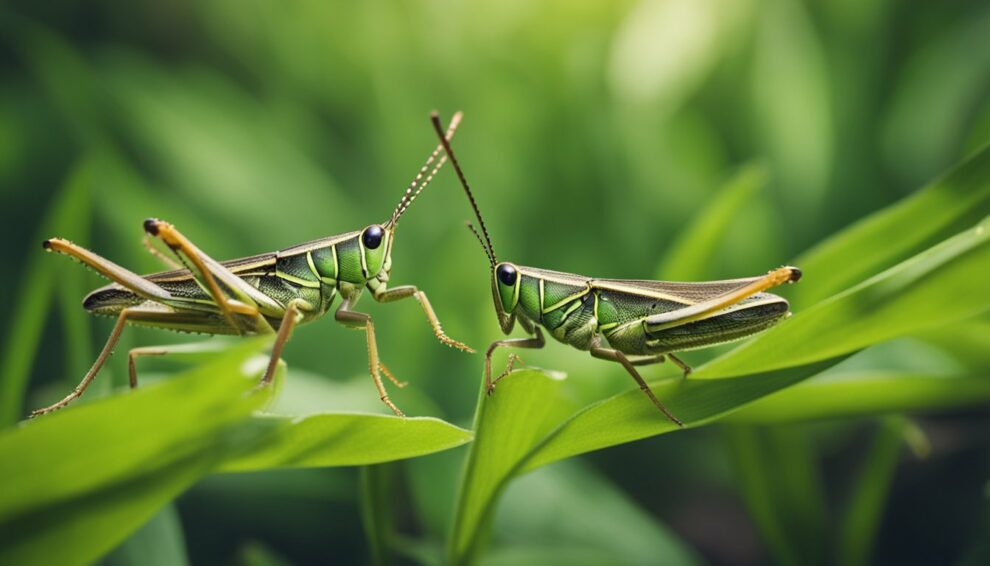Grasshoppers are fascinating insects that are known for their incredible leaping abilities.
They belong to the order Orthoptera, which also includes crickets and katydids.
These insects play a crucial role in the ecosystem, serving as both predator and prey.
They are found in a variety of habitats, including grasslands, forests, and deserts.

Grasshoppers are important members of the environment, as they help to control plant populations.
They are herbivores and feed on a variety of plants, including grasses, leaves, and cereal crops.
In turn, they are preyed upon by a number of animals, including birds, reptiles, and mammals.
Grasshoppers are also important as a food source for humans in some cultures.
Despite their small size, grasshoppers are incredibly powerful jumpers.
They are able to leap up to 20 times their body length, which is equivalent to a human jumping the length of a football field.
This incredible ability allows them to escape from predators and find food.
Grasshoppers also have well-developed wings, which enable them to fly away from danger when hopping alone is not sufficient.
Frequently Asked Questions
How do grasshoppers contribute to the health of our ecosystems?
Grasshoppers play a crucial role in maintaining the balance of their ecosystem.
They are herbivorous insects that feed on a variety of plants and vegetation, which helps to keep plant growth in check.
This, in turn, helps to prevent overgrazing and allows other plant species to thrive.
Grasshoppers also facilitate a natural balance in the decomposing and regrowth process of plants, making it a more efficient place for plants and other animals to thrive.
What are the primary dietary habits of grasshoppers?
Grasshoppers are primarily herbivorous and feed on a variety of plants and vegetation.
They have a voracious appetite and can consume large amounts of plant matter, which they metabolize for energy.
Some species of grasshoppers are known to be highly selective in their feeding habits and prefer certain types of plants over others.
In what ways are grasshoppers beneficial to agriculture and farmers?
Grasshoppers can be beneficial to agriculture and farmers by controlling weed growth and reducing the need for herbicides.
Additionally, they can help to break down plant matter, which can improve soil fertility.
In some cases, farmers may even use grasshoppers as a source of protein for livestock feed.
What are the potential negative impacts of grasshoppers on crops and human livelihoods?
While grasshoppers can be beneficial to the ecosystem, they can also have negative impacts on crops and human livelihoods.
Large populations of grasshoppers can cause significant damage to crops, leading to reduced yields and economic losses for farmers.
In extreme cases, grasshoppers can even cause famine by consuming all available crops in an area.
How do grasshoppers fit into the larger food web and who are their natural predators?
Grasshoppers are an important part of the food web and are preyed upon by a variety of animals, including birds, rodents, reptiles, and other insects.
Some species of grasshoppers have developed unique defense mechanisms, such as camouflage and chemical defenses, to protect themselves from predators.
What could be the ecological consequences of a significant decrease in grasshopper populations?
A significant decrease in grasshopper populations could have far-reaching ecological consequences.
As herbivores, grasshoppers play a critical role in recycling nutrients from plants and facilitating plant growth.
A decrease in their populations could lead to reduced soil fertility and changes in plant composition, which could have ripple effects throughout the ecosystem.
Additionally, a decrease in grasshopper populations could impact the food web by reducing the availability of prey for other animals.









